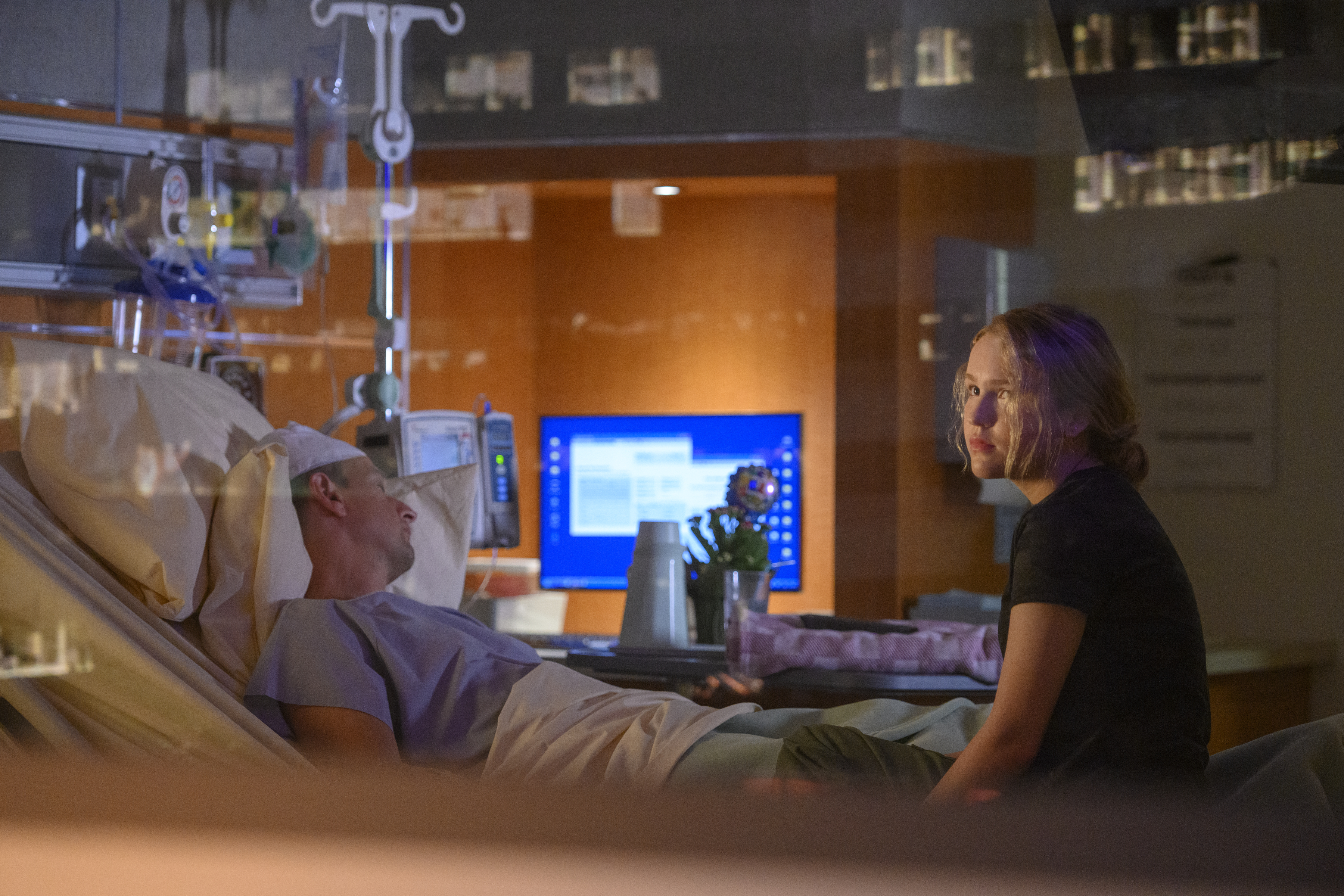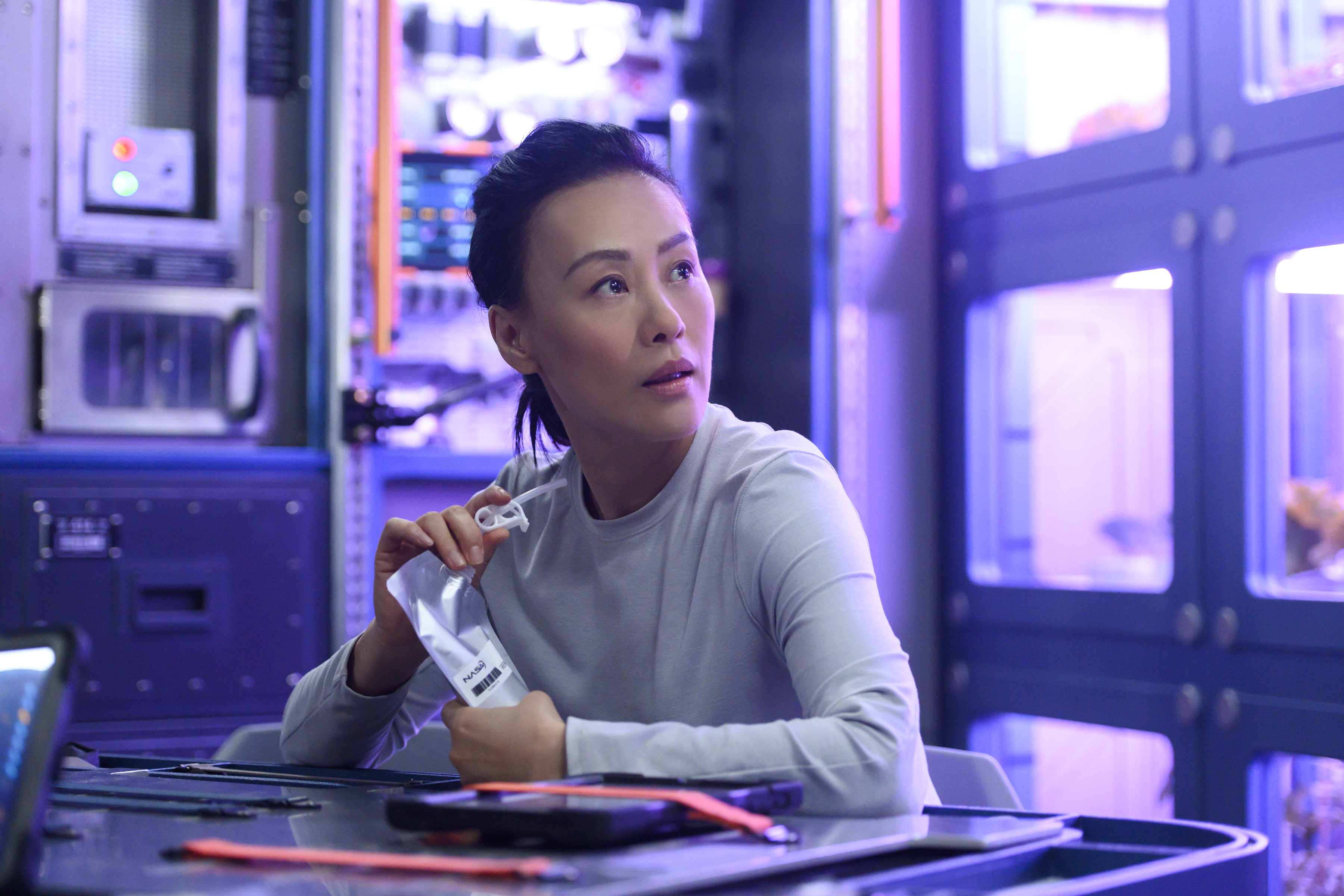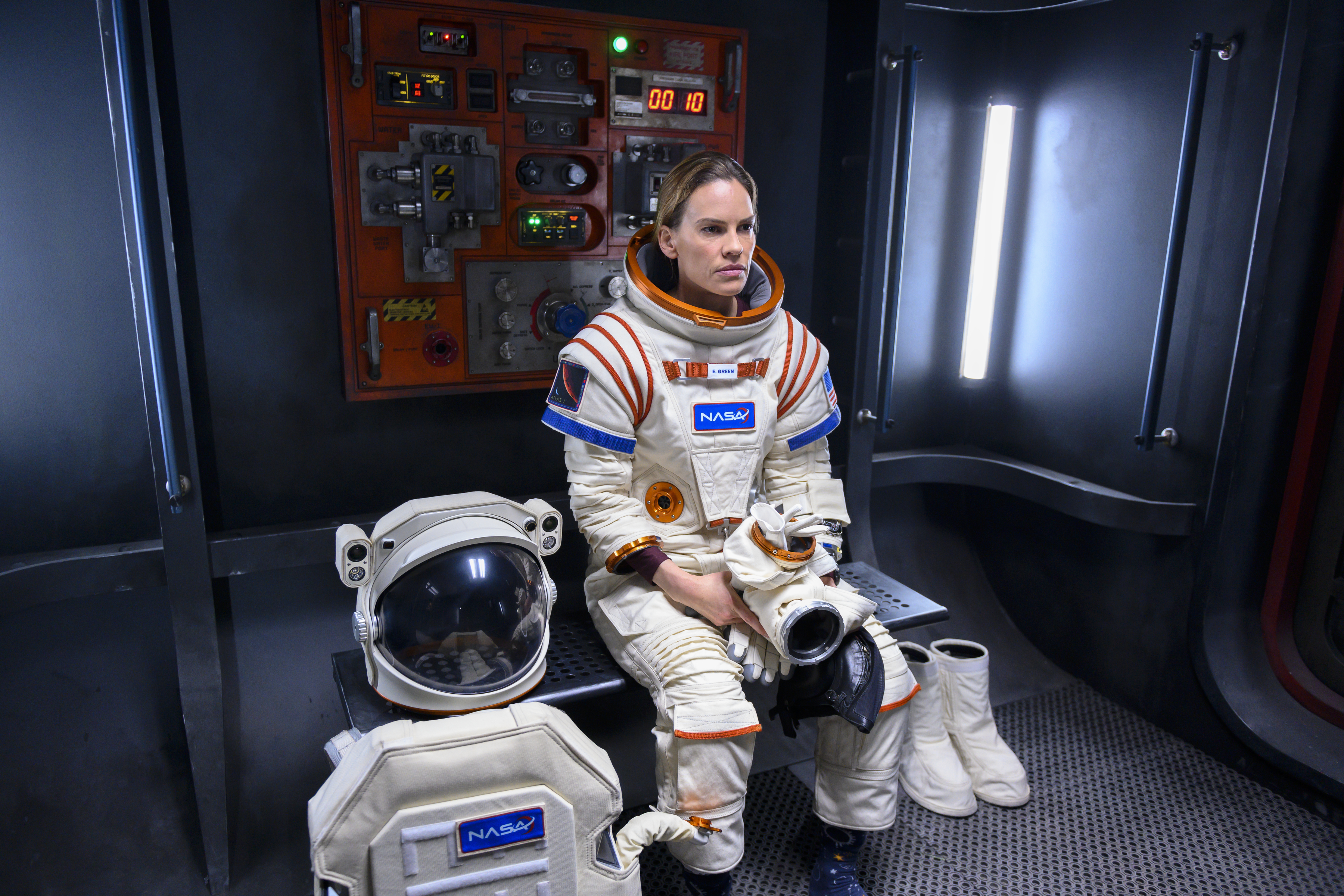Hilary Swank takes us to Mars in Netflix's 'Away' and tensions run high (review)
*Spoiler alert: Details about the new Netflix series "Away" will be included in this piece (though, no, I will not tell you if they actually make it to Mars.)
The new space series "Away," which highlights the emotional (and often life-threatening) struggles that the first humans embarking on a trip to Mars may face, launches on Netflix today (Sept. 4).
The series, which stars Academy Award-winner Hilary Swank, showcases the plight of the first Mars-bound astronauts as they say goodbye to loved ones and climb into a rocket headed for the Red Planet. And, while it has some flaws and relies on some tropes, the show is a thrilling, emotional rollercoaster.
From executive producer Jason Katims (well known for his work on Relativity, Roswell, Friday Night Lights), the series is inspired by the real-life story detailed in "Away," the 2014 Esquire feature by writer Chris Jones' which explored NASA astronaut Scott Kelly's year-long mission aboard the International Space Station.
Related: Netflix Mars series 'Away' lifts off with nods to NASA history






Going to Mars
"Away" shows the journey of the brave, Mars-bound crew, made up of Commander Emma Green (Swank) from NASA, Ram Arya (Ray Panthaki) from the Indian Space Research Organisation (ISRO), U.K. astronaut Dr. Kwesi Weisberg-Abban (Ato Essandoh), Lu Wang (Vivian Wu) from China and Russian cosmonaut Misha Popov (Mark Ivanir).
The series begins with the crew anticipating the flight of the Atlas spaceship, the first to carry humans to the surface of Mars. The show draws heavily from the real world of spaceflight, as agencies like NASA are hard at work to get humans to Mars by, they hope, the mid-2030s. And, just like NASA, the crew of the Atlas uses the moon as a jumping off point to get from Earth to Mars.
Breaking space news, the latest updates on rocket launches, skywatching events and more!
To ensure at least elements of spaceflight realism amidst the interpersonal drama (which, of course, there is drama in real spaceflight as well), "Away" turned to the experts. The show relied heavily on consultations with a number of real-life astronauts including retired NASA astronauts Peggy Whitson and Mike Massimino to guide the production crew and the actors to let them know about not only the technical elements of spaceflight but the emotional realities as well.
Related: 20 sci-fi movies and TV shows to binge watch on Netflix right now
In fact, in striving for realism, Massimino even has a brief cameo in the series. In his scene, Massimino plays himself being interviewed by Rachel Maddow on television (speaking with the press is something that astronauts like Massimino do frequently in real life).
Now, the first major hurdle that the astronauts face: they have to say goodbye to their families and loved ones, knowing that they only have roughly a 50/50 chance of surviving the mission. This is complicated for each individual crew member and their families, especially Lu, who is hiding a secret part of her true identity from not only the crew but her family as well.
Pretty soon into their journey, they hit a snag — a chemical leak has caused a small fire aboard the Atlas. And, if you know much about space travel you know that fire is the enemy.
This incident, while quickly contained by the quick-thinking crew, causes the crew to immediately doubt Commander Green, even causing some crew members to go so far as to report back to ground control that she is not fit to be leading the crew. It is rather disheartening for the first few minutes of the show to showcase a crew arguing over whether or not Green was fit to lead or if she would simply "freeze" under pressure in difficult situations — a trope placed upon female leaders in movies for years.
Related: Biggest space movies to watch in 2020
While crew dynamics would differ from mission to mission in real life, Massimino, in speaking with Space.com, said that it would be very rare for a crew to actually question their commander in such a way.
"I've never seen anything like that," he told Space.com. Once you're a commander, he said, "you've most likely flown already in space, and you've demonstrated that you do have leadership qualities and you're the right person for the job."
The show, while showcasing a talented and diverse cast, occasionally relies on stereotypes. For example, Swank's Commander Green, the woman in charge of the mission, is not only doubted for her leadership qualities by her crewmates but her husband is part of the ground control team and it is often brought up that he will "keep her safe."
Additionally, Popov's love of vodka and gruff exterior are running, onboard jokes; Wang is an honor and duty-focused citizen who has difficulty showing emotion, and so on and so forth. And while some of the cultural aspects brought up about the crew members do ring true with their respective upbringings, the show relies too heavily on details that could be considered tropes or stereotypes when it really doesn't need to.
One social aspect that does ring true with real-life astronauts, is the ever-present struggle between their work out in the stars and their loved ones back at home, and the entire crew struggles with this.
In real life, astronauts, as many others do, face the constant struggle of striking a balance between work and family. Massimino even spoke with the crew about this reality. I "talked about a lot of the emotion behind it in the family situations and stuff," he shared.
"We have family issues, just like every other family," Massimino said. "In general, we try to help each other when those things happen." Like, he added, if we "have a sick kid or sick parent or need to talk, usually we're there for each other."
As Massimino explained, because astronauts don't have control over launch schedules and such, often they have to be away from their families. He told one particular story about being assigned CAPCOM over Thanksgiving. And so, while his family went off to New York to visit with relatives, he and the other astronauts whose families were out of town were stuck without them.
As relationships flare and an LGBTQIA+ storyline unfolds, yet another disaster strikes the Atlas: One of the craft's solar arrays won't go up properly and so, to prevent them from floating off into space to die, Green and Popov have to do a spacewalk.
Massimino, who spent a few days with the cast and crew helping and advising, "helped with a script, they were doing an EVA [Extravehicular Activity] scene and so I tried to help with that."
For the spacewalk (also known as an EVA) scene, Massimino helped the actors to figure out "how you would work with each other, how you would use your tethers, how would you get out there? Were you scared about it?" He helped the cast to think about "how you would talk to each other, how you would take care of each other , what you would be thinking," he said.
Now, not all spacewalks are extremely dangerous. But in "Away," the danger of this particular EVA captures the world's attention. And while it might be dramatized (as … this is a dramatic, fictional television show), this type of spacewalk would really be that high stakes, because it is life or death.
"When you're fighting whether or not you're going to stay alive, that makes it a different scenario. Definitely," Massimino said.
He added that the spacewalk they did would be especially dangerous because the astronauts were attempting something that would rarely, if ever, be done and since they weren't close to Earth, if the EVA were unsuccessful, they couldn't just come home.
"I remember training after the Columbia accident [in 2003], training for my next flight ... and we had no safe haven on the [space] station … if we had to do this repair, it might be what's gonna save our life," Massimino said, remembering a time in his astronaut career where he embarked on a high stakes spacewalk.
Related: Tom Cruise, SpaceX, NASA developing action film shot in space
Technical triumphs and blunders
In terms of the technical aspects, especially with its astronaut consultants, "Away"works hard to ensure that while itis certainly a fictional drama, it feels real. From Massimino's on-air performance to the real spaceflight achievements referenced throughout the show (like the 1997 depressurization event aboard the Russian Mir Space Station's Spektr module), it gets a lot of things really right.
The show even tackles issues like vision impairment in space, a mysterious problem often referred to as "space blindness" in which spaceflight often changes astronauts' vision, an effect that can last for some time. The series also looks at what a virus outbreak might look like aboard such a mission and just how life-threatening it could be if even one crew member becomes sick.
Still, while the show does triumph in its depiction of many technical aspects of spaceflight, still, some details burst the bubble of believability just a bit, especially if you are a space enthusiast. For instance, onboard the Atlas, the actors work to demonstrate the lack of gravity. However, while sometimes they are floating spheres of water through the air, other times, it seems as if they are right at home on Earth, with their hair firmly in place, tears rolling down their faces and objects resting on desks, not floating away. When the microgravity is showcased it is well done, but it seems to turn on and off at random.
Additionally, the astronauts do, at a couple of different moments, almost die of dehydration after an issue with their water supply aboard the Atlas. It is suggested that they turn their urine into drinkable water and this idea is dismissed with a laugh. However, in real life, aboard the International Space Station, the environmental control and life support system (ECLSS) does, in fact, turn urine into potable water. (Astronauts shared a "toast" with the recycled water when the system came online in 2009.)
There were other, small details that strayed from realism, but overall the technical details of the show at the very least painted a truly real-feeling human spaceflight endeavor.
Email Chelsea Gohd at cgohd@space.com or follow her on Twitter @chelsea_gohd. Follow us on Twitter @Spacedotcom and on Facebook.

Chelsea “Foxanne” Gohd joined Space.com in 2018 and is now a Senior Writer, writing about everything from climate change to planetary science and human spaceflight in both articles and on-camera in videos. With a degree in Public Health and biological sciences, Chelsea has written and worked for institutions including the American Museum of Natural History, Scientific American, Discover Magazine Blog, Astronomy Magazine and Live Science. When not writing, editing or filming something space-y, Chelsea "Foxanne" Gohd is writing music and performing as Foxanne, even launching a song to space in 2021 with Inspiration4. You can follow her on Twitter @chelsea_gohd and @foxannemusic.

